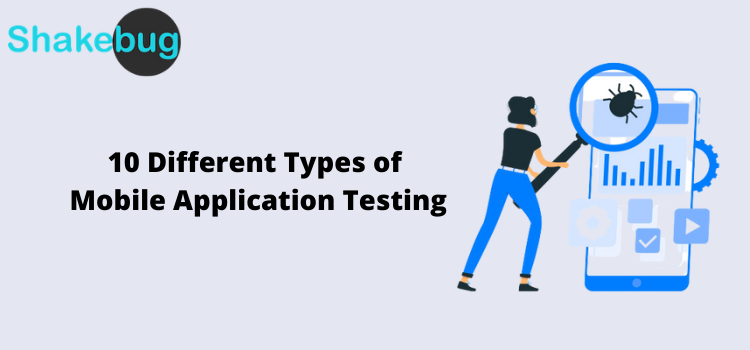In recent times various mobile applications are developed, and more than 4 million mobile applications are available for customers. So every business owner needs different types of mobile applications for testing.
Mobile-device testing functions to assure the quality of mobile devices, such as mobile phones, PDAs, etc. The test will be conducted on both hardware and software. And from the point of view of various processes, testing includes R&D testing, factory testing and certification testing.
Mobile-device testing involves a set of activities by monitoring and troubleshooting mobile applications, content and services on the actual handset. Testing involves the verification and validation of hardware devices and software applications.
Developing applications for the Android platform is a complex business as developer use multiple tools for mobile app development and accomplish other toxic processes. You will have to test with multiple operating system versions, hardware vendor interface layers, hardware configurations, device types, and network capabilities. Testing metrics for Android-based applications can be a serious challenge, affecting the quality, time-to-market, and ultimately profitability of your product.
So different types of mobile application testing are required.
What are the different types of mobile application testing?
Following are the top mobile testing types that are used by top mobile application companies.
1. Usability testing
Usability testing is a technique used in user-centred interaction design to evaluate the performance of any application.
This is done to verify whether the application is achieving its goals and receiving favourable feedback from users. This is important because the usability of an application is the key to commercial success.
Another important part of usability testing is to ensure that the user experience is consistent across devices. This section of the test hopes to address the major challenges of diversity in mobile devices and diversity in mobile platforms/OS, also known as device fragmentation.
A major part of this type of usability testing is to ensure that there are no major errors in the functionality, placement or size of the user interface across different devices.
This can be seen as an irreversible usability exercise, as it gives direct input into how actual users use the system.
Utility testing focuses on measuring the ability to the improvement of highlighted areas.
2. Performance testing
Performance testing is important whether it is a regular web application or an application on a mobile device. If an application goes live without performing performance testing and if the end-user faces performance issues like a slow response, etc., he/she will try to find another better application that will perform better.
Performance testing is a little expensive and also takes more time. That’s why many customers avoid going for performance testing, but it will help a lot with issues in production. Thus, any application should be thoroughly performance tested before making it available to the end-user.
3. Security testing
security testing is testing for applications running on mobile device platforms and operating systems.
Security experts look into any security issues related to the use of these applications and how to design them to be more secure.
It also checks for vulnerabilities in hacking, authentication and authorization policies, data security, session management, and other security standards.
Fundamental issues in mobile application security testing include the fact that mobile applications frequently modify registry entries and the configuration of the device operating system when input files to the device.
All of these aspects may require some form of security testing. Professionals can use methods such as application footprint analysis to find out how installation changes a device’s operating system and also focus on data security and application behaviour.
Hence it is vital to focus on security testing of the mobile applications.
4. Manual testing
Manual testing is a mobile application testing platform that allows mobile application designers and QA professionals.
This ensures that the application is working, as mentioned in the requirements document or not.
If you don’t want to face any technical problems, you need to complete one round of manual testing to make the mobile application bug free and stable and deliver a quality product to your client, because if the application is bug free, then the final Users will use the application more easily.
By the way, you can use a bug reporting tool for mobile apps to manage the tracking and reporting of the bug effectively!!
If manual testing is done then the final product will perform as per your expectation. The most common type of manual test includes physical interface test, exploratory testing and complex test.
5. Compatibility Testing
It is necessary to do compatibility testing of any mobile application, it ensures that the application works consistently even with different device properties, such as different screen sizes and resolutions.
It is the type of non-functional testing which ensures the operation of any mobile application on different operating devices.
There are two types of compatibility testing, backward compatibility testing and forwards compatibility testing.
6. Installation testing
Some mobile applications come pre-installed on the device while others need to be installed through the store.
Installation testing verifies that the installation process runs smoothly without facing any difficulty to the user. This testing process includes the installation, updating, and uninstallation of a mobile application.
This testing also ensures flawless update and make it error-free.
7. Localisation testing
Connectivity changes with change in network and location, non-automated testers can conduct comprehensive localisation testing.
This type of testing verifies all localization issues, including local currency, UI issues, untranslated strings, errors, various local regulations requirements and unnatural translations.
A globally distributed team can also test it across multiple locations and under different network conditions. Finally, localization issues can be tested by hiring testers in the required geographic areas.
Localisation testing is very important for mobile applications to get proper geographic reasons.
8. Crowdsource Testing
In recent years, crowdsourced testing has become popular as companies can test mobile applications faster and cheaper using a global community of testers.
Due to the growing diversity of devices and operating systems, as well as localization needs, it is difficult to comprehensively test mobile applications with small in-house test teams.
A global community of testers provides easy access to a variety of tools and platforms.
9. Functional testing
Functional testing of mobile applications ensures that the application is working as per the requirements. Most of the testing done for this is driven by the user interface and call flow.
This checks whether a mobile application is ready to launch and installed properly or not.
This type of testing also verifies the functional aspects of any application. It focuses mainly on the objective and easy flow of any application.
10. Automated testing
Automated testing uses the help of tools, scripts, and applications to perform test cases by repeating pre-defined tasks.
It depends on the pre-scripted test, where we compare the expected result with the actual when the pre-script is executed. It is one of the comprehensive types of testing.
Automated testing serves as an authentic source as it decrease the expense of developing an application.
In conclusion, there are 10 different types of mobile application testing including functional testing, compatibility testing, performance testing, security testing, usability testing, installation testing, update testing, network testing, localization testing, and acceptance testing.
Each type of testing serves a specific purpose and is crucial in ensuring the quality and functionality of a mobile application. However, it is important to note that there are also key challenges encountered by testers during the mobile application testing process, such as device compatibility, performance optimization, and security vulnerabilities.
It is essential for testers to have a thorough understanding of these challenges in order to effectively test and improve the overall quality of a mobile application.


